Why Are F1 Tires Shiny? The Surprising Reasons.
Tires are more than just tubes of air that move the car, they are incredibly beautiful, or in this case, shiny. Have you seen F1 races on your tv and thought why are F1 tires shiny? They add aesthetic appeal to the entire vehicle that is a treat for the eyes.
If you watch F1 you already know that Pirelli is the tire brand that stands behind, or under F1 cars. They are the exclusive tire supplier for F1. They use a special mold that has chrome treatment done during the manufacturing process which results in shiny tires.
Keep reading to find out why are F1 tires shiny. Explore the reasons behind their bright appearance on the race track and discover the secrets behind their glossy surface.
Who manufactures Formula F1 tires?
Although Pirelli is F1’s exclusive tire supplier now, but initially Pirelli faced lot of competition. Many reputable companies such as Bridgestone, Goodyear, Michelin, Continental, and Firestone were part of the early competitive companies alongside Pirelli. .
A lot of these companies had previously been partners of F1 racing. For example, Bridgestone tires were used in F1 from 1997 until 2010. And 2010, was Pirelli’s time to shine.
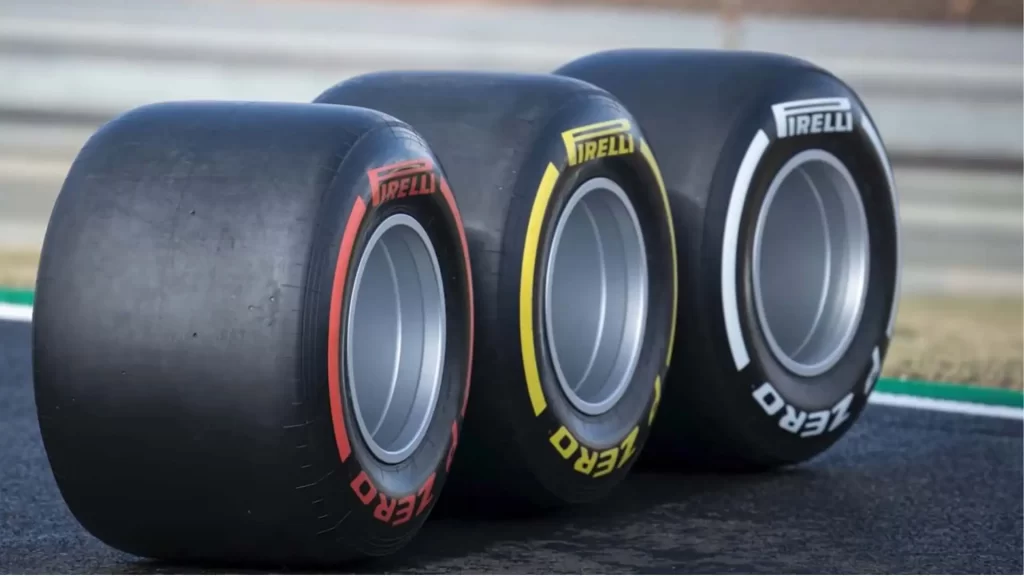
Earlier, since 1950, the company has been focused on performance tires. They came back to F1 in 1981 alongside other reputable brands such as Avon, Michelin, and Goodyear.
And then they took a step away from F1 and had a two-year break in 1987. After the break, they returned in 1989 and were in the game til 1991. After their spotty presence in F1, they officially returned in 2011 and have stayed as exclusive partners ever since then.
F1 had a great way of stacking these companies with very much-needed fame. It encouraged car enthusiasts to purchase the very tire that was used by the incredible drivers in the races.
why are f1 tires so thick?
F1 tires are thick because of the technical regulations that were set by the FIA. Moreover, they are also made thick so that they can provide the racers with exceptional performance, cornering, braking, and safety.
These tires are not your regular passenger tires, they are designed in such a way that they can withstand the rapid forces of acceleration and braking.
F1 cars accelerate from 0 to 60 mph in just around 3 seconds, or even less. Impressively, they can also decelerate from a speed of 200 mph to a complete stop in under 4 seconds.
Handling the additional pressure generated by these high-performance vehicles is a critical task that must be managed without making any compromises in terms of safety and performance.
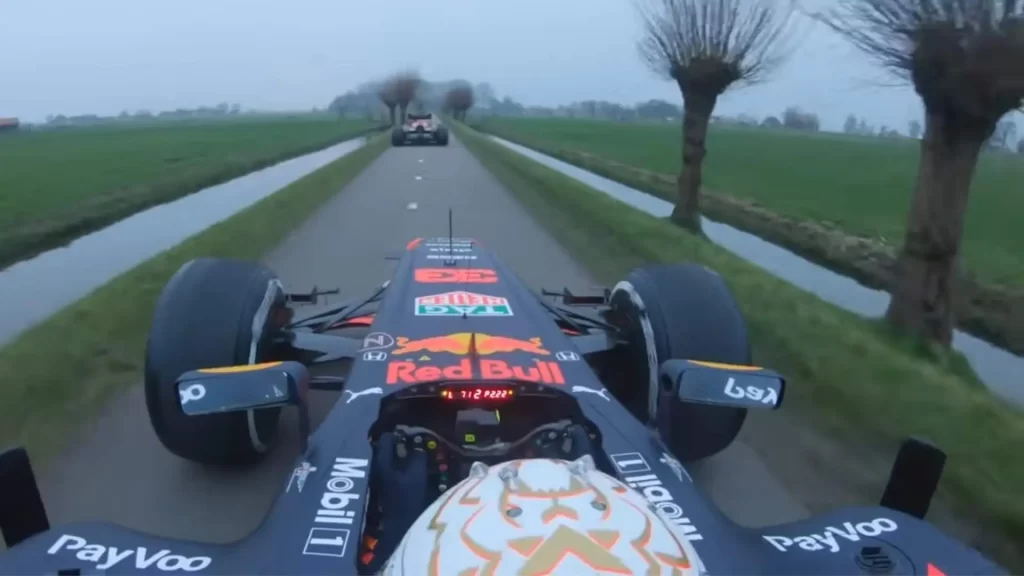
How are Formula 1 tires manufactured?
Around 150 research engineers are dedicated to designing F1 tires in Italy. These engineers research special compounds and test them out in labs.
Complex experiments are conducted to land on the right formulation of tires for F1. The company (Pirelli) has a motorsport factory in Romania and another factory in Turkey. Virtual tires are made here and then the physical prototype is tested out in Italy.
Imagination is brought to reality in Italy. These tires go through every possible simulation to determine the results. Almost all the racing conditions are run on these test tires, which take them to the very edge of their limits. Only if they pass these series of tests, they are promoted to fit into a real car to run a circuit test.
After they pass the vigorous track testing, they are eligible for the final selection for F1. Various parts of the tires are given dedicated attention so that they turn out to be perfect. These tires incorporate natural rubber, synthetic rubber, and various other synthetic fibers.
They are then sent to production where they also have an id tag. This id contains all the information about the tires. After this, the tires are cooked, i.e. vulcanization. The barcode is sealed in the heat.
Then they go through a weight check, visual check, and an x-ray check. A destructive test is imposed upon a random sample of tires. After this very long process, they are determined to be suitable by F1 drivers.
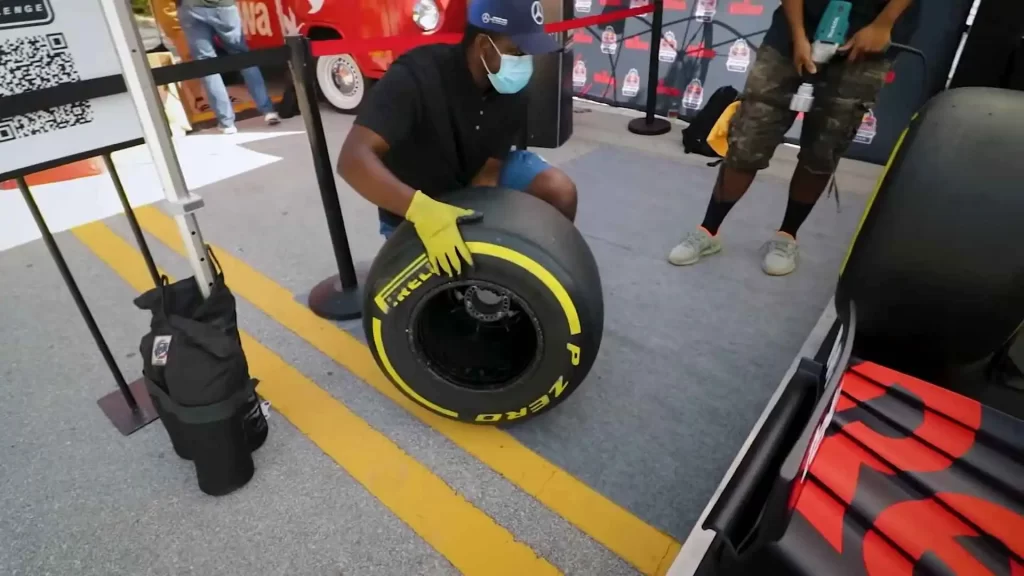
What compounds are used in manufacturing Formula 1 tires?
Formula 1 tires are constructed using a combination of synthetic rubber, natural rubber, and various artificial fibers. These materials are carefully selected and engineered to provide the necessary performance, durability, and grip required for F1 racing.
F1 drivers typically have three compound options to choose from during races. These compounds are designed for dry weather conditions and come in soft, medium, and hard variations. These compounds are distinguishable by their yellow and white markings.
When racing in rainy conditions, a distinct type of tire compound, marked in blue, is utilized to ensure better performance on wet surfaces.
For situations where the weather is neither extremely rainy nor completely dry, such as a moderate or transitioning climate, intermediate tires with green markings are employed to strike a balance between excellent grip and handling.
Did You Know?
There are over 100 elements in each tire along with 18 structural components. Each and every Pirelli F1 tire takes about 5 hours to produce. Although not all of these elements impact the level of shine.
Why do Formula One Tires Have No Treads?
F1 tires are bald and you must have noticed it as light bounces off these tires. They do have very important reasons to produce these tires without any tread patterns.
Grip and handling are their two eyes. In order to achieve this almost impossible task, their tires have no tread which provides them with amazing track surface grip.
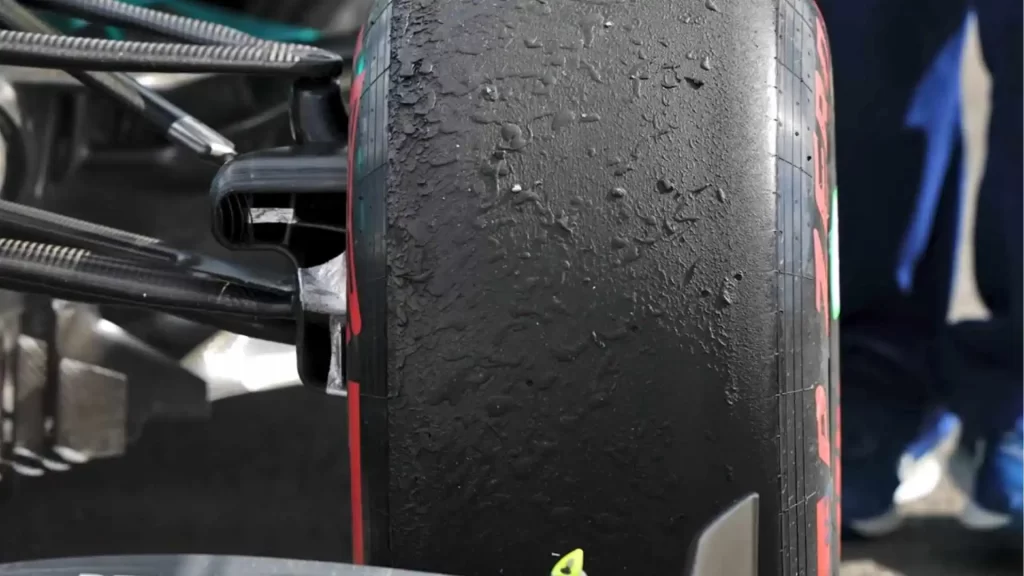
Although when the roads are wet or damp, intermediary or slick tires are used and these tires do have treads on them. They exist in order to disperse water.
They are capable of evacuating approximately 85 liters of water per second per tire, even when reaching speeds of nearly 300 kph. These smooth, bald wet tires were reintroduced in 2009. There is simply no stopping for these tires after the treads were removed for dry roads.
What happens to used tires after the Formula 1 race?
The answer is what you would expect from such a reputable company. Pirelli has a ‘Green Technology’ program, due to which they are ‘ecologically disposed of’. They certainly keep the well-being of our environment in mind.
After a Grand Prix, all the tires are gathered and ripped apart. Just before they are ripped apart, data is collected in order to study them which will eventually help in producing better tires.
Consequently, they undergo compression before being conveyed to Pirelli’s engineering and logistics facility located in Didcot, England.
In the center, they are shredded once again. The factory uses pellets as fuel. This is done so in the process of cement manufacturing.
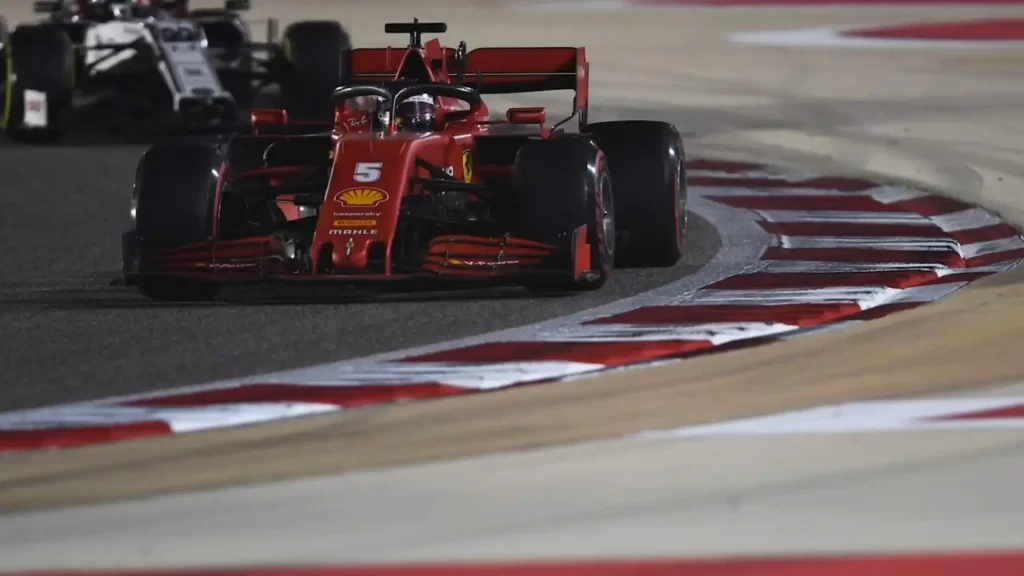
After that, the cement companies burn these little pellets at exceedingly high temperatures, the burnt tires produce environmentally friendly gases, and all that is left of the once majestic tires are nonpoisonous ashes.
Do Formula 1 tires have anything in common with regular tires?
F1 tires are incredibly special in terms of technology and innovation. Their acceleration speeds are eye-watering as they go from 0 to 60 in under 30 seconds. Within four seconds or even less, they are capable of braking from 200 mph.
Regular tires do not do this as they are designed to be durable, last long, and provide the utmost safety while also being pocket friendly.
They can endure substantial force, supporting a weight of up to 1 tonne in downward pressure while also withstanding 4g’s of lateral force, and enduring 5g’s of longitudinal force. They also have an unequivocal ability in emptying your wallets.
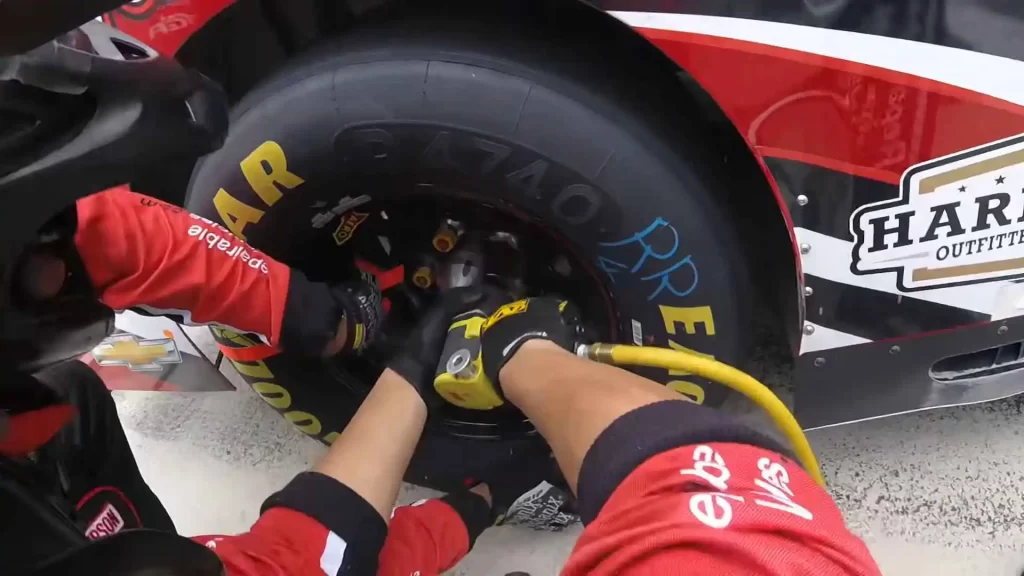
It is extremely expensive, just one pair of these tires costs around $1,717 to $ 2700. Regular tires can only withstand around 1,000 to 1,300 pounds depending on the size, make and model, and brand of your tires.
Conclusion – why are F1 tires shiny
Hopefully, you have received your answers on why are F1 tires shiny. They use special molds that make them seem a certain way. This shine does wear off soon for gives it an aesthetic appeal.
F1 tires are incredible, their acceleration rate is the amount of time it takes for your eyes to open and close, and their capacity to withstand weight is also incredible.
F1 tires are specially made by companies like Pirelli to support their insane requirements.
